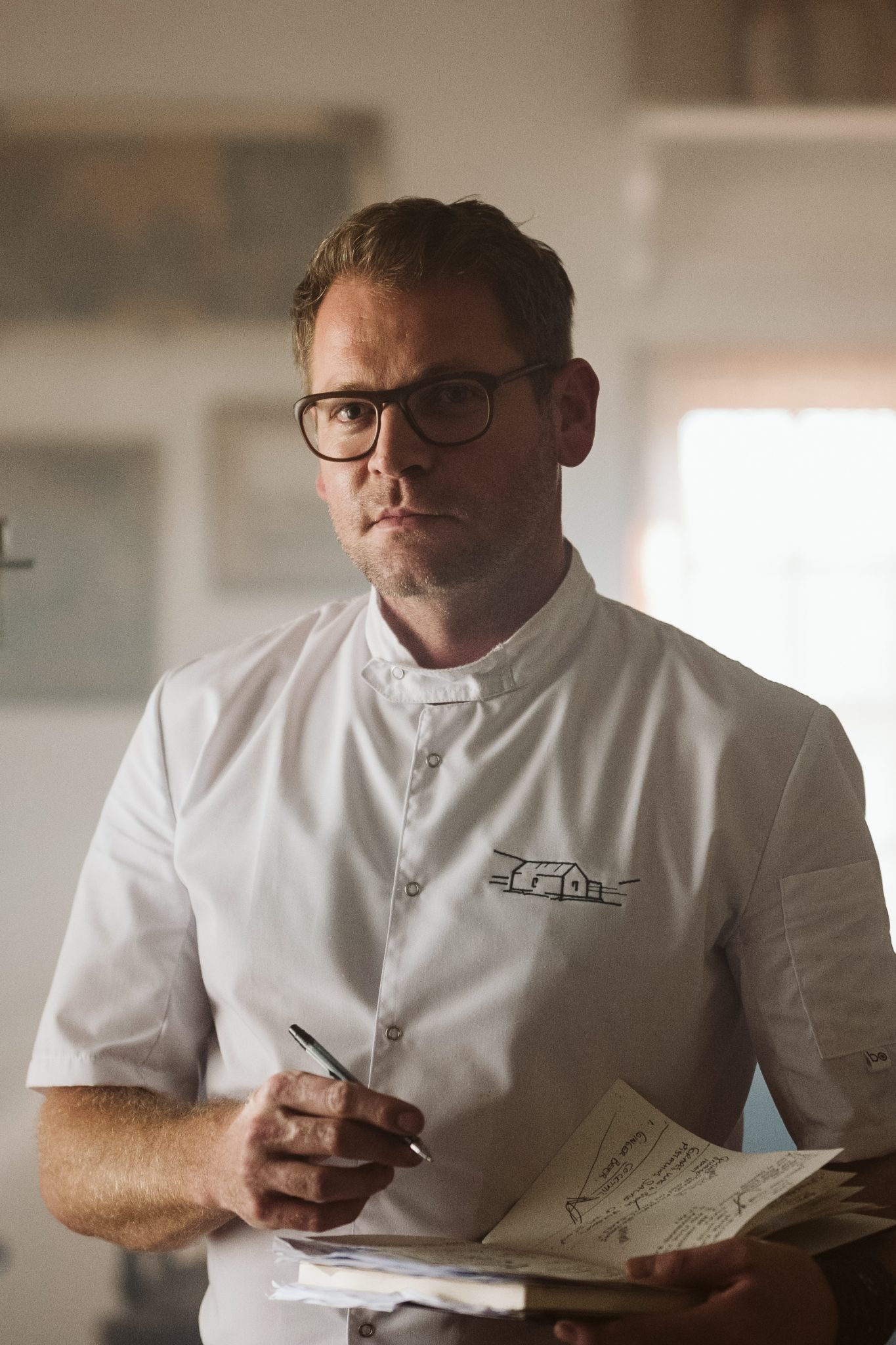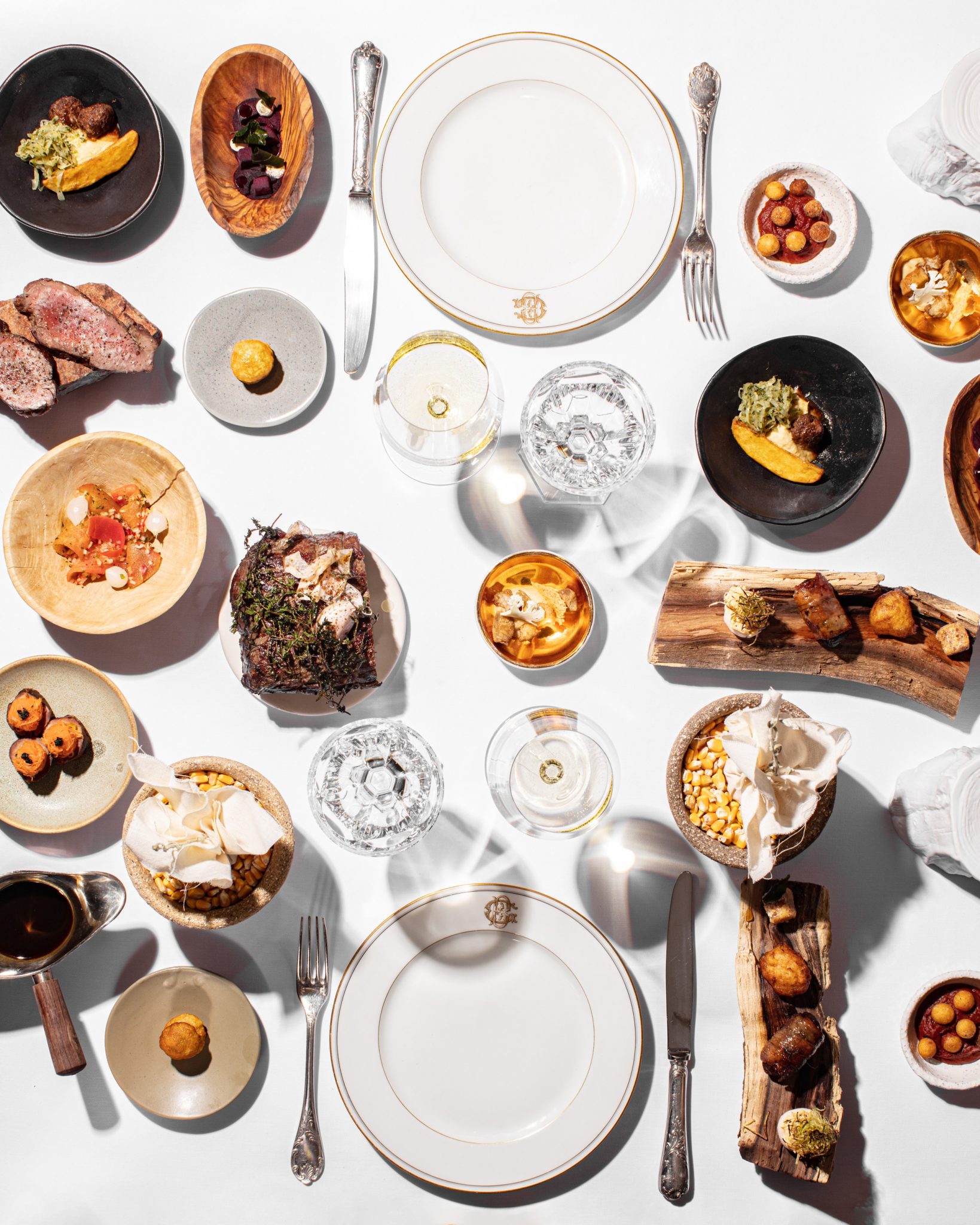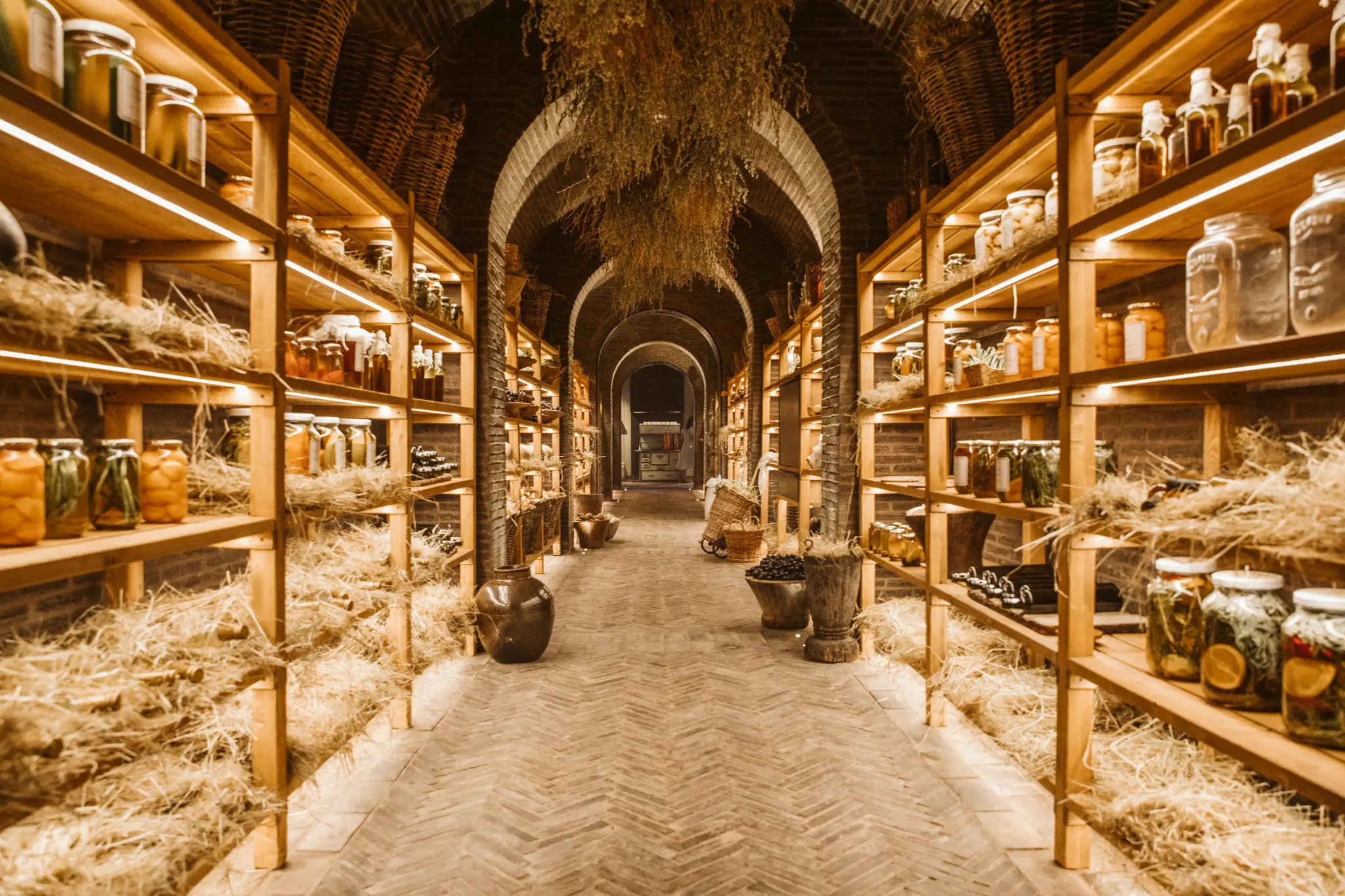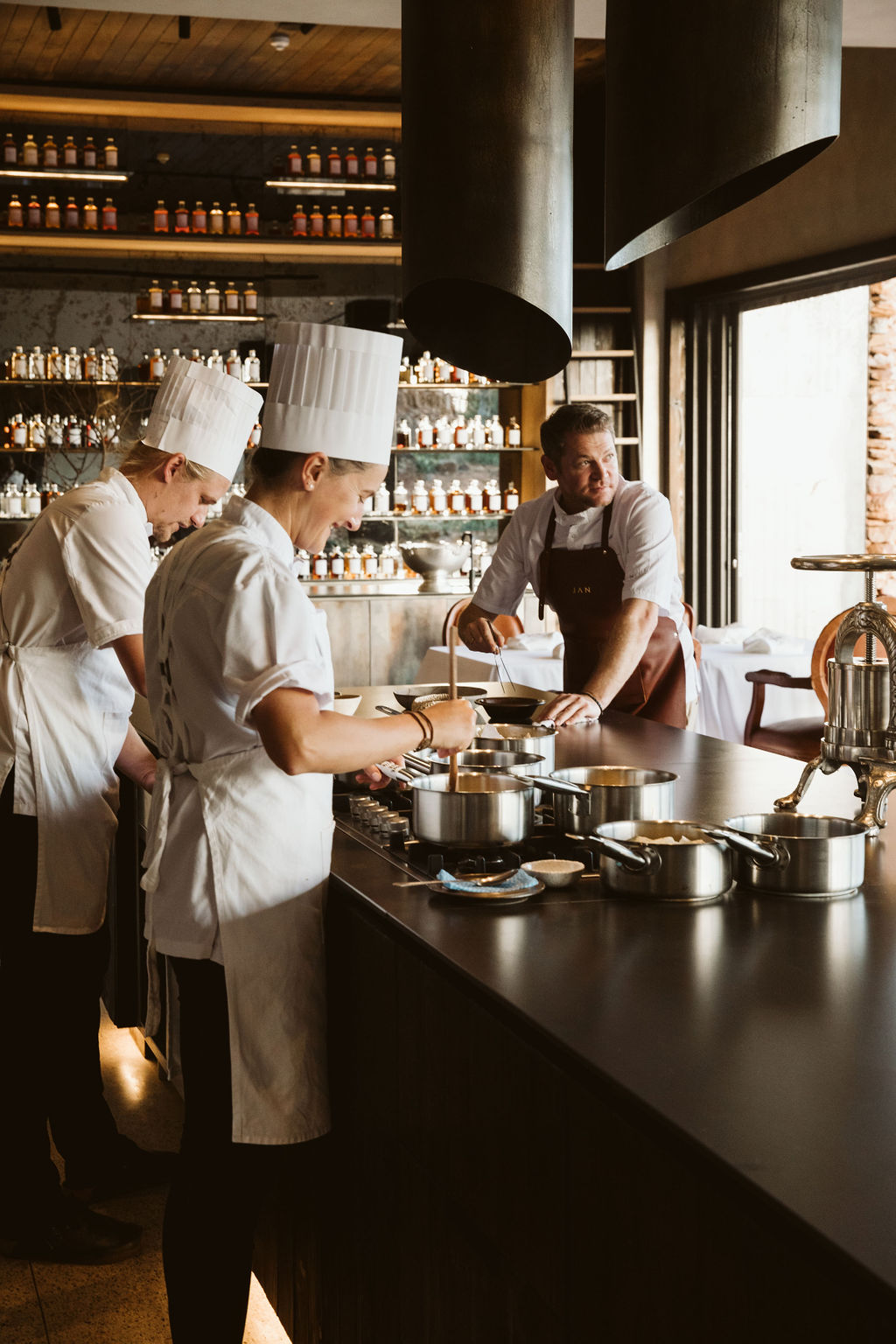When Michelin star chef Jan Hendrik van der Westhuizen first laid eyes on Boscia House, a one-hundred-year-old farmhouse situated at the beautiful Tswalu Kalahari in the Northern Cape, he saw the vastness of the region as a canvas on which to create something special.

Worlds away from the beautiful waters of the French Riviera, where his first restaurant, the universally celebrated Restaurant JAN, is located, the region’s untouched ingredients and breathtaking desert surroundings were the perfect inspiration to do something completely new, and to give food from the Kalahari the global recognition it deserves.
In the years that followed, Jan Hendrik embarked on an immersive journey across the Kalahari, exploring its ingredients and traditional, local cuisine, while working on what would become his great homecoming project.
“Klein Jan was what my grandmother used to call me,” he reveals, which was the inspiration behind the name, Little Jan. “I felt a deep connection to this place from my very first visit – the tiny old whitewashed house, secluded in the open vastness, brought new meaning to the word, klein. It was like I could feel my Ouma Maria’s presence, as though she had just left the farm kitchen to fetch some eggs. That was when I knew I wouldn’t want to change anything about Boscia House; she only needed to be restored.”

From a rudimentary sketch on a serviette, Klein JAN began to take shape thanks to an incredible team of builders, architects and creatives, bringing every element together with the utmost care for the fragile environment in which Klein JAN lives today. It would take great skill not to upset the environment’s delicate balance, while at the same time innovating its ingredients to new heights. In fact, every grain of sand that was excavated during the construction of the restaurant’s extensions was carefully preserved and returned to cover the site when construction on the underground structure was complete.
From the outset, the team knew that the rarest of all ingredients in the Kalahari would also be their primary source of life, and foresaw that Klein JAN would celebrate water above all else. Alongside the revived Boscia House there now stands a plaasdam with an adjoining wind pump, an antiquated reservoir charged with collecting this precious resource from deep within the earth. Beneath the ground, in a cavity accessed through a door built into the side of a plaasdam, a helical staircase descends to a depth where the temperature drops to a steady 15°C, a contrast to the daytime temperatures outside, which can often climb well above 40°C.

Here, guests of Klein JAN get a chance to engage in a tasting of products in the root cellar, stocked only with local produce acquired within a 300km radius of the restaurant, before entering a soup-and-bread kitchen where they enjoy an immersive taste of what farm life was like for Jan Hendrik growing up in Middelburg, Mpumalanga.

The experience then culminates in a series of modern Kalahari courses enjoyed with a full view of the open-plan kitchen, while overlooking the vast plains of the area.
This uniquely African experience has made such an impact that in less than a year since opening, the restaurant was awarded the title of ‘Hidden Gem’ by the world-renowned La Liste 1000, a prestigious selection of the world’s best restaurants, and has inspired the Klein JAN Cookbook, Jan Hendrik’s third culinary title and an ode to the food and people of the Kalahari.
At its core, Klein JAN was inspired by a love for South Africa’s natural wealth and a desire to create, blending the chef’s innovative homecoming project with the legacy of the land.

” When I first laid eyes on Boscia House, absorbing the stark beauty of the surrounding dunes and a landscape in various complex stages of its endless life cycles, I suddenly understood the values on which Tswalu was built,” says Jan Hendrik. “To leave the world in a better state than how we found it – and the true value of creating something from nothing.”
















